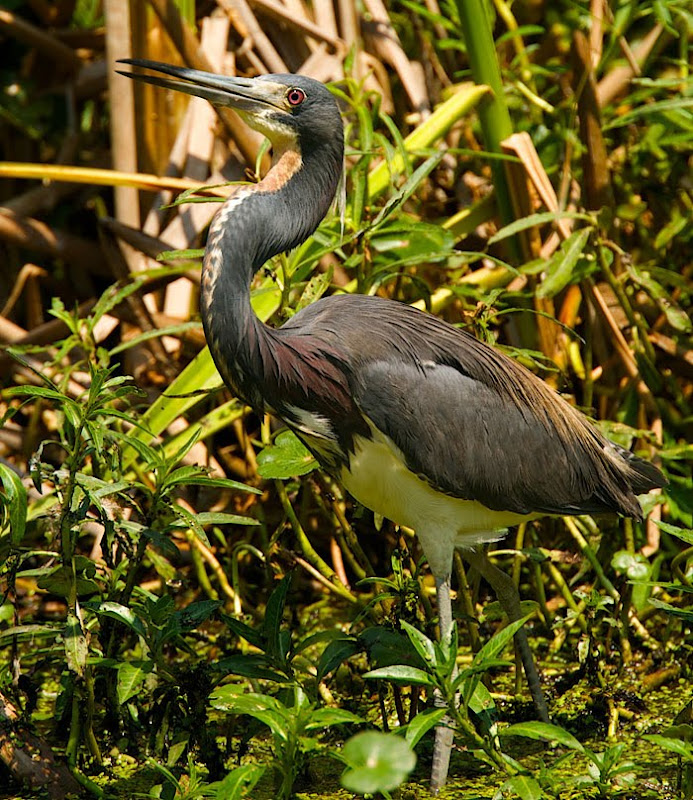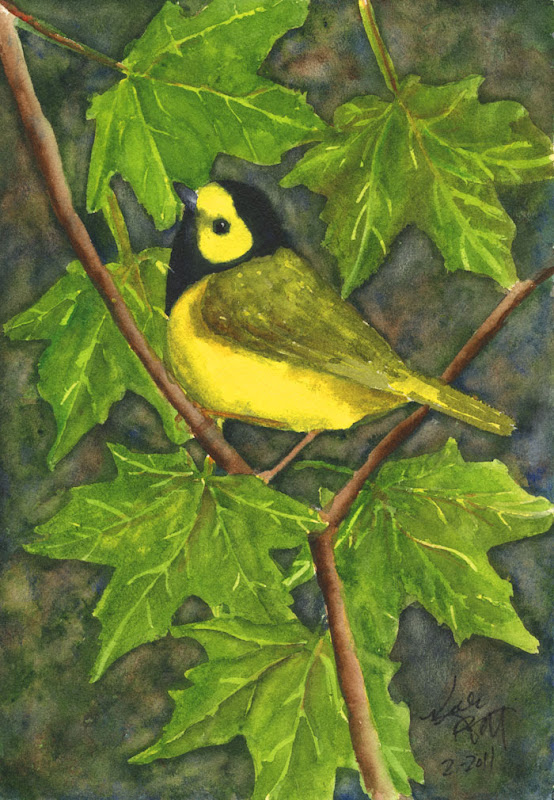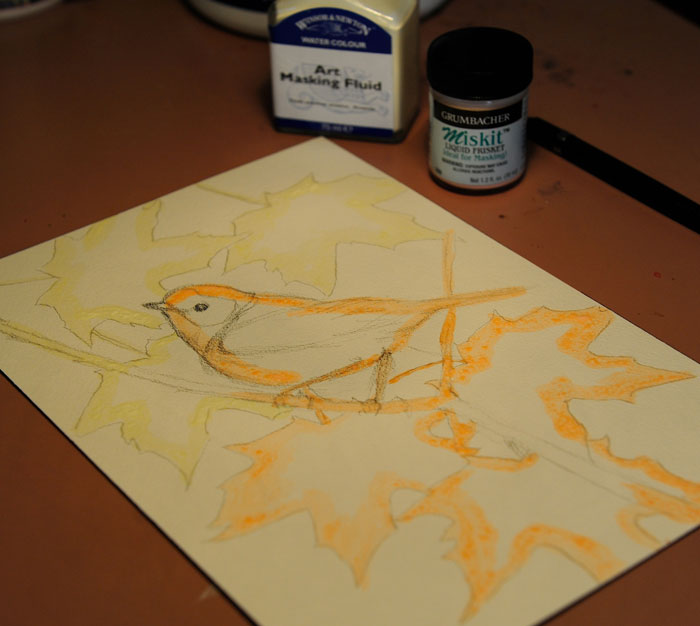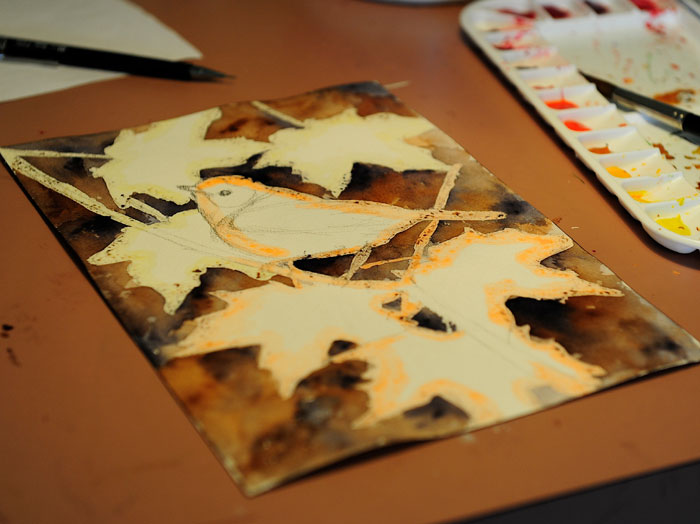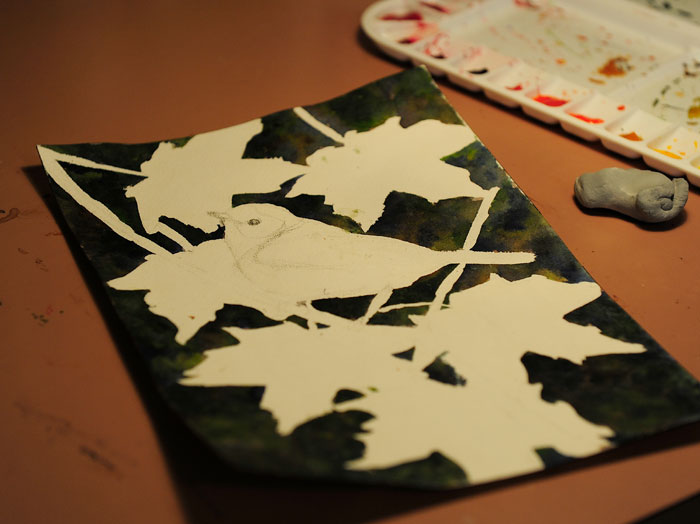
Painting 124, "Bird in Deep Night" is simple and primitive...just night colors and a sweet sleeping bird. I didn't use standard shadows...made the bird flat so he's not too real.
(Oil Pastel, 9x12 Arches Cold Pressed 140 lb Paper)

Painting 123, "Happy June Cherries" follows the same theme...color and feeling...simple and primitive. Again, no real shading...I wanted the bird flat with energy (can you tell I had just devoured TWO chocolate "fundraiser" bars? Happy February Chocolate was coursing through my veins...).
(Oil Pastel, 9x12 Arches Cold Pressed 140 lb Paper)

Painting 122, "Golden-crowned Kinglet in Autumn" is a bright and watery watercolor, but I controlled the second wash in the background by limiting the palette to red and yellow with a heavy pigment load. This painting started as a realistic painting, but I was dead tired and the paintbrush had a life of it's own...going heavy handed after the first detailed pass and then just pouring on color (I don't know why I chose red and yellow...thinking back, it might have been my brain's attempt to grab some energy to try to wake up!)
(Watercolor, 12x16 Arches Cold Pressed 140 lb Paper)

Painting 121, "Golden-crowned Kinglet in Monochrome"...no detail...no color. I did this in minutes with two watercolor pencils and a water brush--no under sketch, using just a bit of negative space to define his belly with a cast shadow. I was at Matty's tennis clinic and was drawing in my sketchbook when this simple little Golden-crowned Kinglet popped to mind. I'm so glad I'm not afraid to paint and sketch in public anymore--thanks to the challenge!!
(Watercolor Pencil, 5x7 Arches Cold Pressed 140 lb Paper)

Painting 120, "Four Turquoise Hummingbirds"
...a super fun test painting! Rick gave me a bunch of Daniel Smith Iridescent and Duochrome watercolor paints, and I wanted to see if they really were iridescent. Guess what...they are!! You can't see it in the scan, but the painting fairly glows in the light with every color reflective. I did heighten the reds in the flowers with a bit of regular watercolor, but the iridescent paint underneath still shines through.
...a super fun test painting! Rick gave me a bunch of Daniel Smith Iridescent and Duochrome watercolor paints, and I wanted to see if they really were iridescent. Guess what...they are!! You can't see it in the scan, but the painting fairly glows in the light with every color reflective. I did heighten the reds in the flowers with a bit of regular watercolor, but the iridescent paint underneath still shines through.
(Iridescent Watercolor, 9x12 Arches Cold Pressed 140 lb Paper)
This painting is part of the 100 Painting Challenge. If you want to make art a regular part of your life...join up! This is my second year of the challenge. I'm working on 500 paintings in five years.







